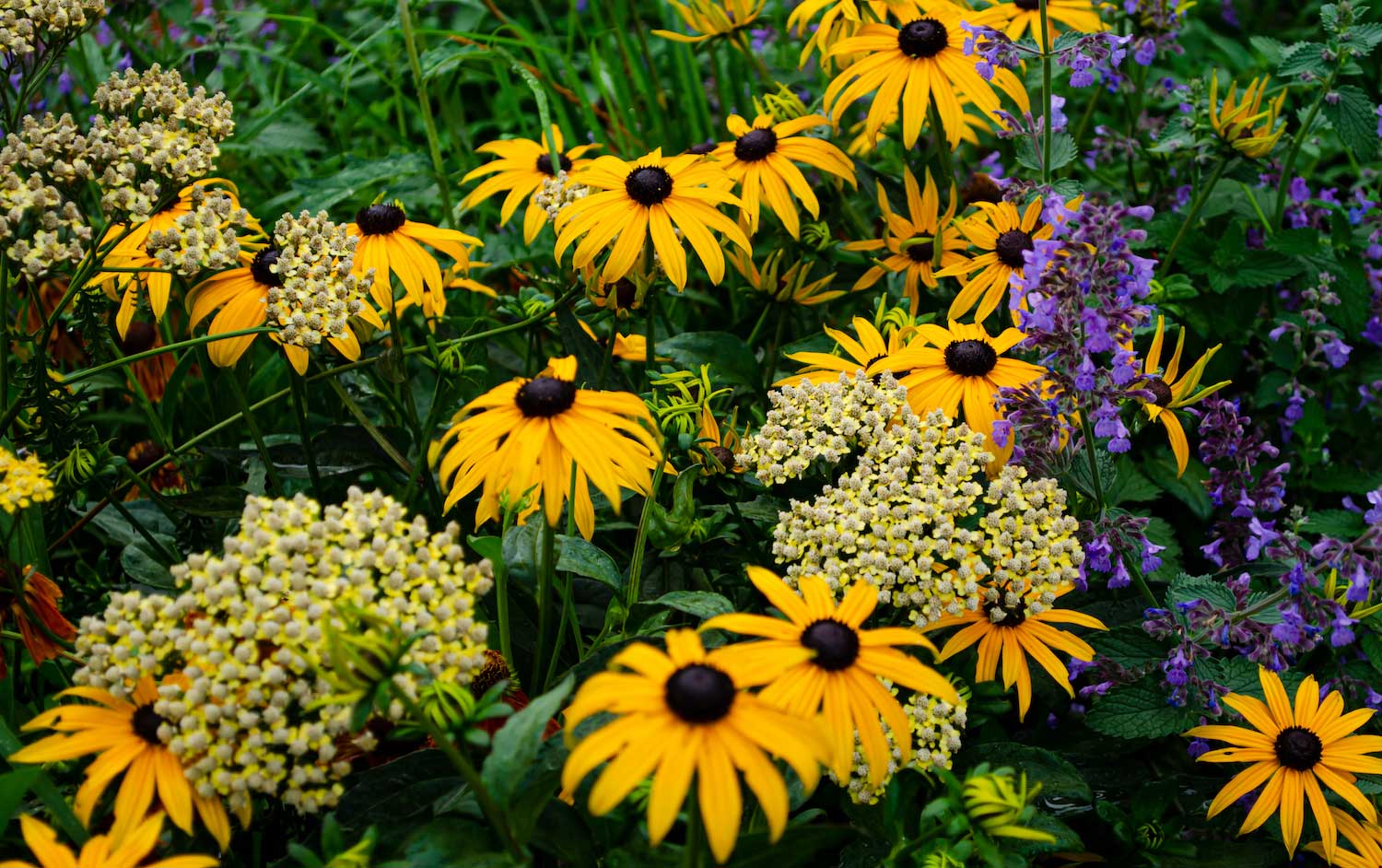Let it rain: How rain gardens can help keep our water clean

How does your garden grow? With water, of course. But if you turn part of your yard into a rain garden, the rainwater that helps your garden grow will also be cleaned and filtered as it seeps into the ground.
Similar to detention ponds, which temporarily hold water runoff during storms and heavy rains, rain gardens are designed to temporarily store water runoff from your property until it can soak into the ground. When it rains, a rain garden will fill with water runoff from your roof, driveway and other nearby hard surfaces, according to the U.S. Department of Agriculture.
Water runoff is a problem because as it runs off roads, driveways, roofs and other surfaces it collects pollutants and other particles that can flow into our streams and ponds as well as into storm drains. About 70% of all water pollution is from pollutants carried by rainwater runoff, according to the U.S. Environmental Protection Agency.
When water runoff flows into a rain garden instead of local waterways and storm sewers, it slowly seeps into the ground and is filtered by the surrounding plants' deep root systems, removing pollutants in the process. Rain gardens can remove as much as 90% of the nutrients and chemicals and as much as 80% of sediments from rainwater runoff, plus they allow 30% more water to seep into the ground than a yard entirely composed of grass does, according to the Groundwater Foundation. This is beneficial because those nutrients can then be used by the surrounding plants, and the chemicals and sediment will not make their way into the sewer system. It also helps prevent flooding during heavy rains.
A rain garden is not a pond. In fact, a rain garden won't be wet most of the time, because the roots of the plants in the garden help absorb the rainfall. These types of gardens usually only hold water after heavy rains, but only for short periods. A well-designed rain garden will drain about 12 hours to 24 hours after it rains, which means it wouldn't become a breeding ground for mosquitoes, the Groundwater Foundation reports.
Like other gardens, the primary feature of a rain garden is plants. Rain gardens should be planted with native flowers, shrubs and grasses because these plants have good root systems and don't require fertilizers. Plus, they utilize nutrients from the soil better than non-native species, the foundation reports. Avoid planting a rain garden near a tree or adding a tree to your rain garden because trees absorb more water than surrounding plants.
Many native plants are also drought tolerant, so they won't be reliant on regular or steady rainfall to grow or thrive. Plus rain gardens offer all the other benefits of native plants — they offer food and shelter for wildlife, they clean the air and they add to the beauty of your landscape.
If you'd like to add a rain garden to your yard, the first step is to take a look around your yard after a heavy rainfall, the Chicago Botanic Garden advises. Your rain garden will be most beneficial if it's placed between the area where the storm water runs off, such as your driveway or roof, and the next place the runoff will travel to, such as a drain or a natural depression in your landscape. Make sure the area you select is at least 10 feet away from the foundation of your house or any other buildings so it does not interfere with underground utility lines, and don't add a rain garden over a septic field.
It may seem like a good idea to turn an area that is frequently wet or where water pools into a rain garden, but that actually is not the case, according to the National Wildlife Federation. Those are signs that an area has poor drainage, which means it's not a good spot for a rain garden. Instead, a mostly flat or gently sloping space in your yard is best.
To create a rain garden, think of it as installing a shallow bowl in your yard. It should be about 6 inches deep, according to the Illinois Department of Natural Resources. You can test the soil quality by filling the hole with water after it is dug. If it takes more than 24 hours for the water to seep in, the soil quality is not adequate for a rain garden.
The hole should have a slight downward slope or tilt on one side, and you can use some of the just dug soil to create an edge or berm along the low sloping side so water does not spill out. Size can vary depending on the space in your yard, but many rain gardens are between 100 square feet and 300 square feet.
With your garden area dug out, planting is next. Arrange your plants with their specific requirements in mind. For example, plants needing the most moisture should be placed in the middle, while plants that do not need as much water should be planted along the edges and other shallow areas, the botanic garden advises.
Here are some more tips for installing a rain garden:
- Look for a spot that gets full or at least partial sun.
- Use a mixture of plants, including sedges, rushes and grasses in addition to flowering plants. The Illinois Department of Natural Resources includes a list of good plant selections for a rain garden on its Rain Garden Requirements and Plant List page.
- Consider a spot that is fed by one or two downspouts from your gutter system.
- The slop of your rain garden should not be more than 12%.
- Consider a soil test to make sure the area does not have heavy clay soils.
